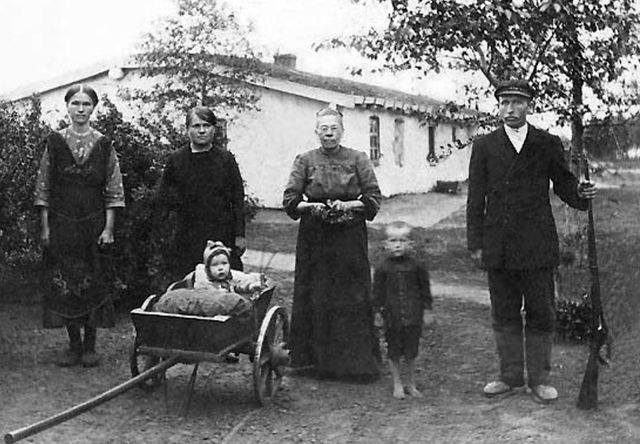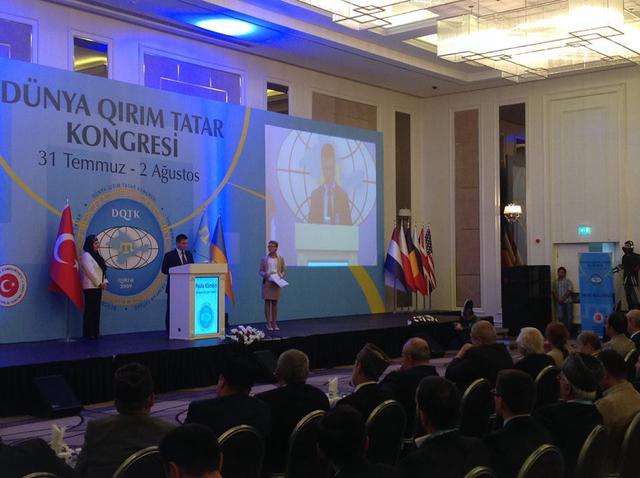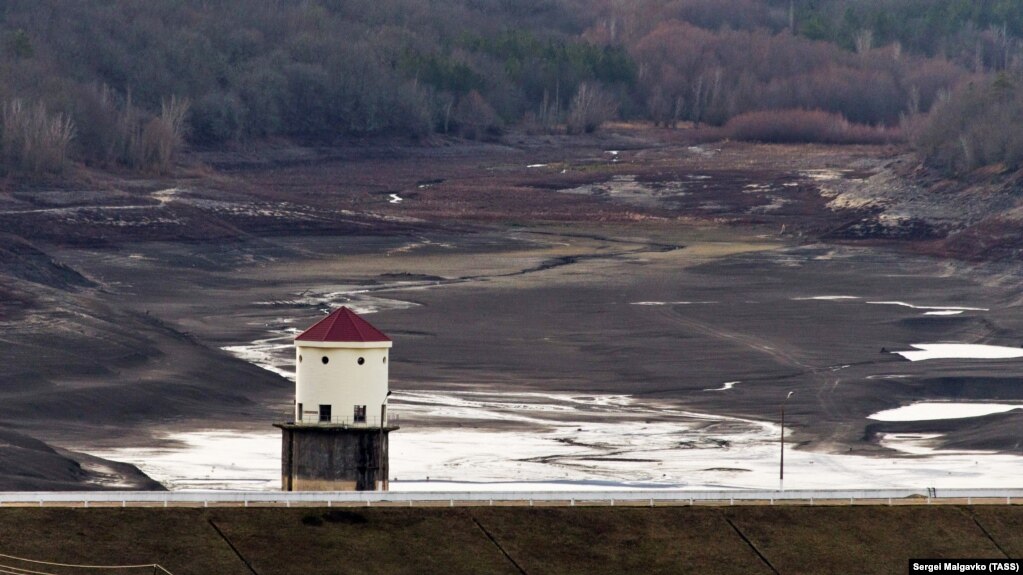Since Russia occupied Crimea in 2014, it has tried to obliterate Crimea’s diverse cultural heritage. But Crimean history can not be erased. It dates from the earliest antiquity and involves many civilizations through time. Different periods of the peninsula’s development not only underline its affiliation to Ukraine but to the world’s historical context. Crimea has played a role on the international stage — not on that of Russia alone.
“Culture. Voice of Crimea” is an initiative focused on promoting national and international recognition of the cultural challenge Crimea faces — preserving a diverse cultural history, while popularizing its historical and cultural heritage with Ukraine. The project’s website posts numerous articles describing little-known aspects of Crimean cultural heritage.
According to a report authored by “Voice of Crimea,” as of 1 January 2010, the peninsula had 14,000 cultural monuments; 54 museums; 300,000 museum exhibits; and six historical and cultural reserves. Since the annexation of Crimea, great material damage has been affected on this heritage. Many incidents of looting and destruction of monuments, removal of exhibits, and issuance of “permits” for illegal archeological excavations have been reported. Many others are unreported but known to have also occurred. Historical facts about Crimea have been distorted and used as a weapon in the disinformation war. These untruths are then exacerbated by the media outlets that are influenced by Russia, the occupying country.
- Read also: Crimea’s occupied cultural heritage
However, no matter how hard the Russian occupants try, Crimean multicultural history is everywhere on the peninsula. This article explores four extant historical fortifications identified by “Voice of Crimea” that exemplify the peninsula’s rich heritage.
1. Genoese fortresses

Genoese fortresses in Crimea are a good example of the successive civilizations that lived in the region throughout history. Today, the fortresses serve as open-air museums depicting what is a universal mode of fortification. Ancient Crimean inhabitants defended themselves from centuries of invaders using military-engineering practices gained by earlier adversaries: Hittites of Asia Minor, ancient Greeks and Romans, Armenians, Byzantines, and Crusaders, leading to the Genoese themselves.
Starting from the 13th century, three Crimean cities, Sudak, Cembalo, and present-day Feodosia (then called Kafa), were the colonies of the Italian city-state Genoa. The Genoese built numerous fortresses in these cities and their consuls controlled all international trade.
The Genoese monuments bear witness to the ingenuity of ancestral architectural landscaping. An especially striking example is the one in Sudak. This complex illustrates the utilization of topography to create unassailable fortifications. For example, the advantage of a steep precipice created a natural defense by the terrain. At the same time, close proximity to the nearby bay provided a harbor for warships and yet another means of protection from invasion.
Genoese fortresses that still stand on their historical Mediterranian territories are considered especially unique structures and representative of primeval cultural heritage. They demonstrate the continuity of civilizations, demonstrating Genoese interaction with the Byzantine, Ottoman, and other early empires.
Throughout the millennia, large sections of these fortresses have been damaged or destroyed. Still, many segments stand and are maintained as global monuments. The most famous one, in Sudak, is located on a cone-shaped hill — the fortress is pitched atop a cliff 150 m high with one facade that plummets to the sea.
Ukraine has recognized all three fortifications — in Feodosia, Sudak, and Balaklava — as monumental fortifications and architectural landscapes of national importance.
In 2011, a major program was implemented in Ukraine: “Identification of ways to promote preservation and development of the cultural heritage of Crimea.” The program was proposed as a serial transnational nomination to the UNESCO World Heritage List, meeting the criteria for “Trade posts and fortifications on the Genoese trade routes from the Mediterranean to the Black Sea.”
– demonstrating the important exchange of human values over a period of time, within a cultural region in the field of architecture and landscape planning
– an architectural ensemble that illustrates significant periods in European history.
Genoese monuments in Crimea have been considered for an independent, serial cross-border nomination since 2011. This would take them out of the broader category of Mediterranean and Black Sea countries that group Ukraine with Türkiye, Tunisia, and Russia (13th century Genoese Azov Fortress in Tana, today on bordering terrain).
Regarding the question of including Russia as part of the joint nomination of the Azov Fortress, Voice of Crimea points out Russia has not been preserving any architectural monuments, including the Ottoman-built Azov. In Tana, only the archeological remains of Azov still stand. This fact alone should preclude the inclusion of Russia in the UNESCO nomination.
In 2012, Ukraine’s Ministry of Culture, together with the Feodosia City Council of the Autonomous Republic of Crimea, held an international conference in Feodosia, under the theme: “Fortified settlements on the Genoese trade routes from the Mediterranean to the Black Sea.” With this initiative, work on the shared nomination started.
However, Russia’s occupation of Crimea in 2014, put an end to the joint effort. Now, neither the Ministry of Culture nor Ukrainian specialists have any reliably verified information on the condition of monuments located in the occupied territory.
Still, it is worth mentioning that one of the postulates of the UNESCO World Heritage Committee states that interstate disputes over the ownership of territory are not an obstacle to being included in the World Heritage List of sites. If they are afforded this status, it will at least prevent international monitoring of the monuments and deter Russia from further destructive actions, Voice of Crimea argues, urging Ukraine to designate these monuments as World Heritage Sites under threat.
2. Relation to the Grand Duchy of Lithuania

In the 18th century, southern Ukraine was incorporated into the Russian Empire as a result of the Russian-Turkish wars.
As all colonizers do, the empire exploited the myth that local populations need to be introduced to “civilization,” as they see fit. This empire was no different. To accelerate colonization, they would appropriate wide-open vulnerable tracts of land, especially around the Kherson Region (mainland Ukraine) and at least as far south as the steppe lands of Crimea. The colonizers aggressively advanced the merit of populating the steppes.
Modern research refutes the civilization myth. In particular, the myth of the Russian Empire bringing civilization to the vast steppe lands is disproved by research regarding the historic town of Tiahyn. Located near the city of Kherson, Tiahyn hosts an archaeological monument of national repute. The fortress and evidence of ancient settlements are remarkable finds.

Research on the monument began in the early 20th century, extending into the 1990s and 2000s. From 2016 to 2020, the South Ukrainian Medieval Expedition of the Institute of Archeology of the National Academy of Sciences of Ukraine, led by Doctor of Historical Sciences Svitlana Bilyaeva, with the support of the Kherson City NGO “Cultural Center Ukraine – Lithuania,” excavated the settlement and located the fortress.
The research project had a major breakthrough in August 2020, when archaeologists revealed that they were able to establish the full boundary of Tiahyn (18 ha) and lay bare its fortress. They also explored the archeological sites of the adjacent Dnipro River and found a significant number of materials relating to the ethnic presence of Lithuanians and Crimean Tatars. A particular success was clearing the fortress tower and its walls, dating from the era of the Grand Duchy of Lithuania.
“The historical journey to the medieval city of Tiahyn brings us closer to restoring the territorial integrity of the State. In the historical Tyiahynka I hear the voice of the Ukrainian Crimea,” said Georgy Byanov, researcher of historical materials and coordinator of the Ukrainian Peacekeeping School.
3. The Germans of Crimea

The Goths ruled the northern Black Sea coast from the 3rd century AD. The inhabitants of the Crimean state of Theodoro, 12th to 15th centuries, adhered to the Christian religion of Byzantium but spoke a language very similar to German. There is no mention of the Gothic language as of the 17th century, although the Goths are mentioned.
Later, the German language sounded again in Crimea. Russian Empress Catherine II had German origins and invited Germans to move to the peninsula.
During the 19th century, 30,000 Germans moved to Crimea. They were mainly peasants growing fruits or vegetables. Part of the migration were artisans employed mainly with woodwork, such as roughly-hewn furniture, implements, and carts. These colonists received a tract of land and were exempt from dues. They also had the right to self-government.

Before World War II, Germans made up 6% of the population of Crimea, with German villages and two German districts. Many Germans lived in Simferopol, Seytlerskyi (Nyzhnyohirskyi), and Ichkinsk (Sovetskyi) districts.
Adolf Hitler had planned to increase the German population and to rename the peninsula Gotland.
Whether the Soviet authorities were aware or not, Germans from the Ukrainian Socialist Republic and Crimea were expelled in advance of other nationalities. Unlike Crimean Tatars, Bulgarians, Greeks, and Armenians, Crimean Germans were not formally deported from Crimea. Documents dated 15 August 1941, mention only “evacuation.”
More than 60,000 inhabitants were deported to Stavropol and the Rostov region. Later, when Hitler’s troops moved to Baku and Stalingrad, these people were sent to Siberia and Kazakhstan. There, they had no rights, worked as slaves in labor camps, and faced hostility from the Soviet people who censured them because of their nationality. For a long time, Germans in the USSR were afraid to speak German in public.
After 1955, all prejudicial allegations and restrictions for Germans were canceled by the Soviets. However, the mass return of Germans to Crimea did not happen. According to the researchers of “Voice of Crimea,” today there are only two-and-a-half thousand Germans living in Crimea. The majority of USSR citizens of German nationality chose to return to Germany.
Wiedergeburt (Renaissance) is the name of the organization of Germans in Crimea, established post-Independence in 1993. Since 1995, there has also been a Fellowship of Deported Germans in Crimea. By 1917, the peninsula had 186 Lutheran churches, as well as German Catholics, Mennonites, and Congregationalists.
Following Russia’s occupation of Crimea in 2014, German residents have faced additional troubles.
Due to the fact that the Germans were officially “evacuated” and not deported, Russia has placed the onus on them to prove their right to the same status as Crimean Tatars, Greeks, Bulgarians, and Armenians. In Russia, descendants of deportees born in places of deportation are considered residents of those “places of deportation.” Only recently has a discussion of changes in legislation begun — changes that would simplify the lives of people affected by deportations. By contrast, such legislation has long been the norm in Ukraine.
Read more in the original article
4. The Armenians of Crimea

The Armenian community has existed in Crimea for almost a thousand years.
The Mongol invasion of Armenia in the 13th and 14th centuries, pushed a large portion of its population to settle in Crimea. Their colony increased quickly. From the time of early settlement, Armenians were active participants in Crimean society and economy, living cooperatively among other nationalities.
Things changed drastically at the end of the 15th century with the capture of the peninsula by the united Tatar-Turkish forces. Among other travesties, the Genoese colony ceased to exist. The bloodshed of battles in 1475, and the subsequent widespread persecution of Christians, saw the number of Armenian settlements in Crimea largely diminished. The situation changed only at the beginning of the 17th century.
In 1778, among other Christian peoples of Crimea, more than 12,000 Armenians were deported. They were allocated desert lands near the banks of the Don River. Only a few hundred Armenians were allowed to remain. A great loss to Crimea was when Armenians — salvaging what they could — took many valuable materials with them, including treasured manuscripts.
After the peninsula became part of the Russian Empire, some Armenians returned to their native regions. Soon their numbers in Crimea increased, supplemented by migrants from eastern and western Armenia. The government created privileged conditions for the revival of their colony. Temples, land tracts, and city quarters were returned, and national city self-governing communities were created in the Old Crimea and Karasubazar.
Scattered throughout most of the peninsula are settlements of Armenians. Ancient Armenian churches and other architectural structures and age-old materials have survived to this day. One is hard pressed to underestimate the contribution the Armenian community has made overall to the development of agriculture, industry, trade and culture of the Crimean peninsula.
Read the full article in English
These four examples only partly illustrate Crimea’s rich multicultural past. This millennial-long history sheds light not only on Ukraine and its distant past but, just as importantly, on the whole world of antiquity. At the same time, understanding even fragments of this critical timeline can help to understand the injustice of what is happening today.
“Culture. The Voice of Crimea” is a project implemented by the Crimean Center for Business and Cultural Cooperation, Ukrainian House, with the support of the Ukrainian Cultural Foundation.





